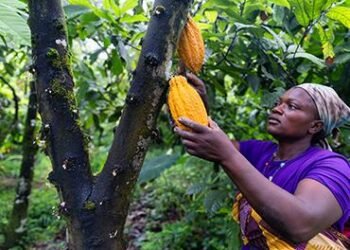The development of a Consolidated National Conservation Agriculture manual that will review the myriad of existing Conservation Agriculture manuals and develop a standardized one to serve as a one-stop reference document for stakeholders in Ghana is soon to be completed and released.
Dr Jasmine Marston, the European Union Resilience Against Climate Change (EU-REACH) Project Manager, disclosed this in Wa during a three-day training workshop for planning officers and management of Information Systems officers in the Upper West, North East, and Savannah Regions of the country.
In many countries, Ghana for example, intensive crop production has depleted soils, to the extent that future production in these areas is jeopardized. Healthy soils are key to developing sustainable crop production systems that are resilient to the effects of climate change. They contain a diverse community of organisms that help to control plant diseases, insect and weed populations; recycle soil nutrients; and improve soil structure with positive effects on water holding capacity, nutrient retention and supply and levels of organic carbon.
Conservation Agriculture is a sustainable approach to agricultural production aimed at protecting soil from erosion and degradation, improve its quality and biodiversity, contribute to the preservation of natural resources, water, and air, whilst improving yields. Conservation Agriculture is 20 to 50 percent less labour intensive and thus contributes to reducing greenhouse gas emissions through lower energy inputs and improved nutrient use efficiency. At the same time, it stabilizes and protects soil from breaking down and releasing carbon to the atmosphere.
Conservation Agriculture is based on three main principles adapted to reflect local conditions and needs: minimum mechanical soil disturbance (i.e. no tillage) through direct seed and/or fertilizer placement which reduces soil erosion and preserves soil organic matter; permanent soil organic cover (at least 30 percent) with crop residues and/or cover crop to maintain a protective layer of vegetation on the soil surface that suppresses weeds, protects the soil from the impact of extreme weather patterns, helps to preserve soil moisture, and avoids compaction of the soil; and species diversification through varied crop sequences and associations involving at least three different crops which promotes good soil structure, fosters a diverse range of soil flora and fauna that contributes to nutrient cycling and improved plant nutrition, and helps to prevent pests and diseases.
Strides have been made to quantify the environmental impact of conservation agriculture in the face of climate change focusing mainly on the ability of the technology to sequester carbon and minimize GHG emissions
Speaking at the workshop, Dr. Marston revealed that mapping of existing resources and land uses, which is being used to design community land use maps that will aid in the development of Community Action Plan guidelines has began in some 18 communities. She noted that the REACH project uses a gender-sensitive approach in helping communities to adopt and sustain good agricultural practices and to assist Municipal District Planning and Coordinating Units in the development of environmentally sound Medium-Term Development Plans that contributes to the realization of Ghana’s International Commitment to the Paris Agreement on the reduction of carbon dioxide emissions.
“The REACH project seeks to primarily address the negative impacts of climate change on communities in the North-West Zone”, she said.
REACH, which is part of the 2017 European Union Ghana Agriculture Project (EUGAP), started in January 2019 and will run until the end of 2024. It is being implemented on behalf of the EU by the German Development Organization (GIZ)/Competitive Cashew Initiative with additional funding from the German Government and with close partnership and oversight of the Ministry of Food and Agriculture.





















